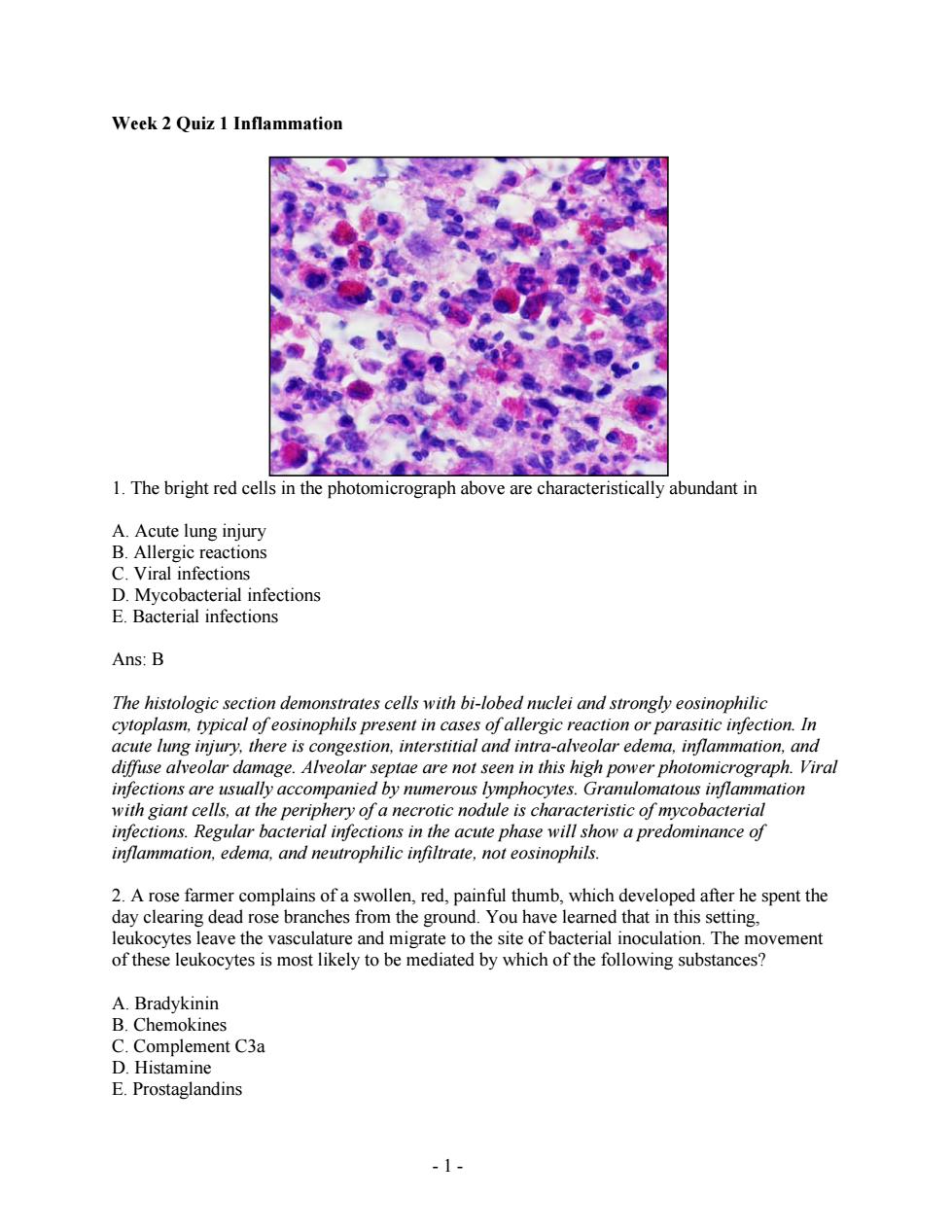正在加载图片...

Week 2 Quiz 1 Inflammation 1.The bright red cell in thep cteristically abundant in C.Viral infections D.Mycobacterial infections E.Bacterial infections Ans:B The histologic section demonstrates cells with bi-lobed nuclei and strongly eosinophilic cvtoplasm.tvpical of eosinophils present in cases of allergic reaction or parasitic infection.in acute lung injury,there is congestion,interstitial and intra-alveolar edema,inflammation,and diffuse alveolar damage.Alveolar septae are not seen in this high power photomicrograph.Viral mation vith giant cells at the al infe phase will show a predominance of tior edema not eosinophils. A rose farme lains which developed after he spent the day the ground ed tha eukocyt re an migrate e culatio vemen 689ou5060m0g013g09Pap29013I1sou6316ona3sa330一 A.Bradykinin B.Chemokines Complement C3a D.Histamine E.Prostaglandins -1 - 1 - Week 2 Quiz 1 Inflammation 1. The bright red cells in the photomicrograph above are characteristically abundant in A. Acute lung injury B. Allergic reactions C. Viral infections D. Mycobacterial infections E. Bacterial infections Ans: B The histologic section demonstrates cells with bi-lobed nuclei and strongly eosinophilic cytoplasm, typical of eosinophils present in cases of allergic reaction or parasitic infection. In acute lung injury, there is congestion, interstitial and intra-alveolar edema, inflammation, and diffuse alveolar damage. Alveolar septae are not seen in this high power photomicrograph. Viral infections are usually accompanied by numerous lymphocytes. Granulomatous inflammation with giant cells, at the periphery of a necrotic nodule is characteristic of mycobacterial infections. Regular bacterial infections in the acute phase will show a predominance of inflammation, edema, and neutrophilic infiltrate, not eosinophils. 2. A rose farmer complains of a swollen, red, painful thumb, which developed after he spent the day clearing dead rose branches from the ground. You have learned that in this setting, leukocytes leave the vasculature and migrate to the site of bacterial inoculation. The movement of these leukocytes is most likely to be mediated by which of the following substances? A. Bradykinin B. Chemokines C. Complement C3a D. Histamine E. Prostaglandins